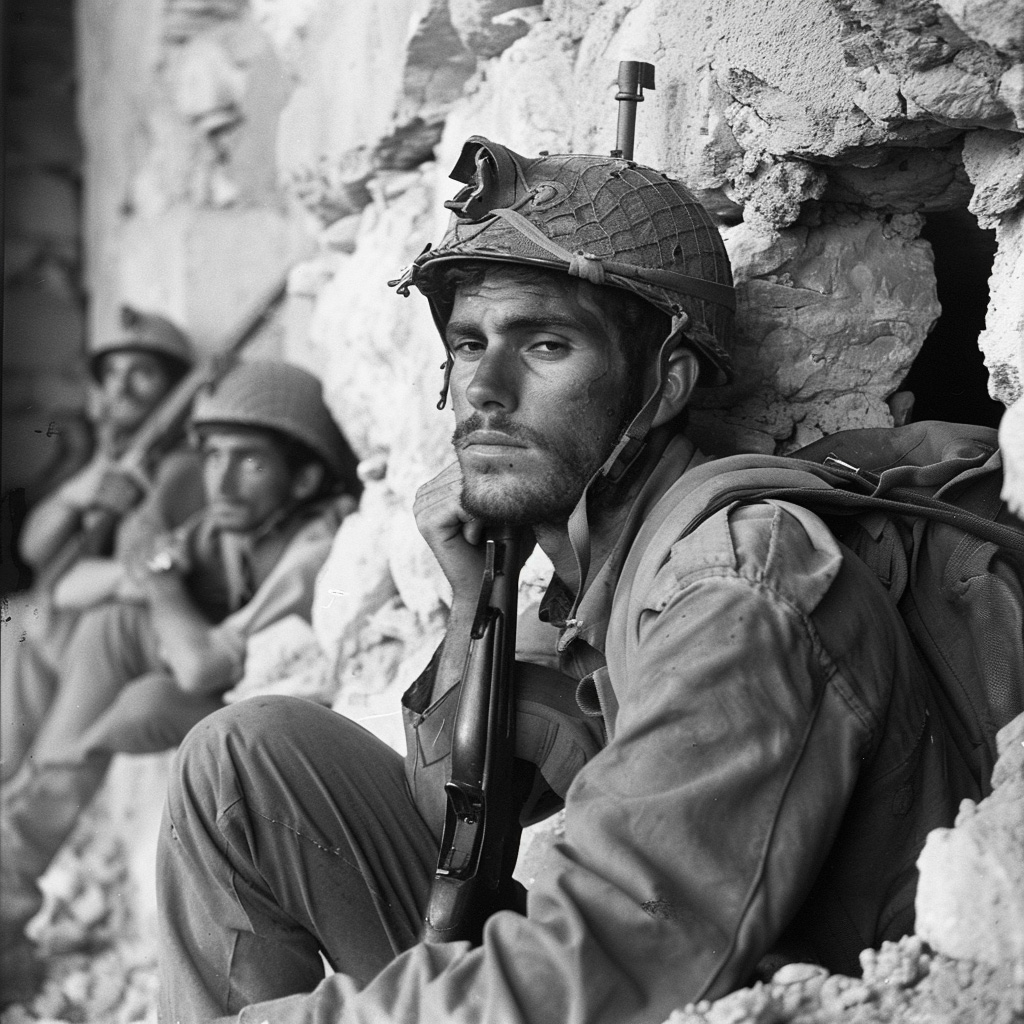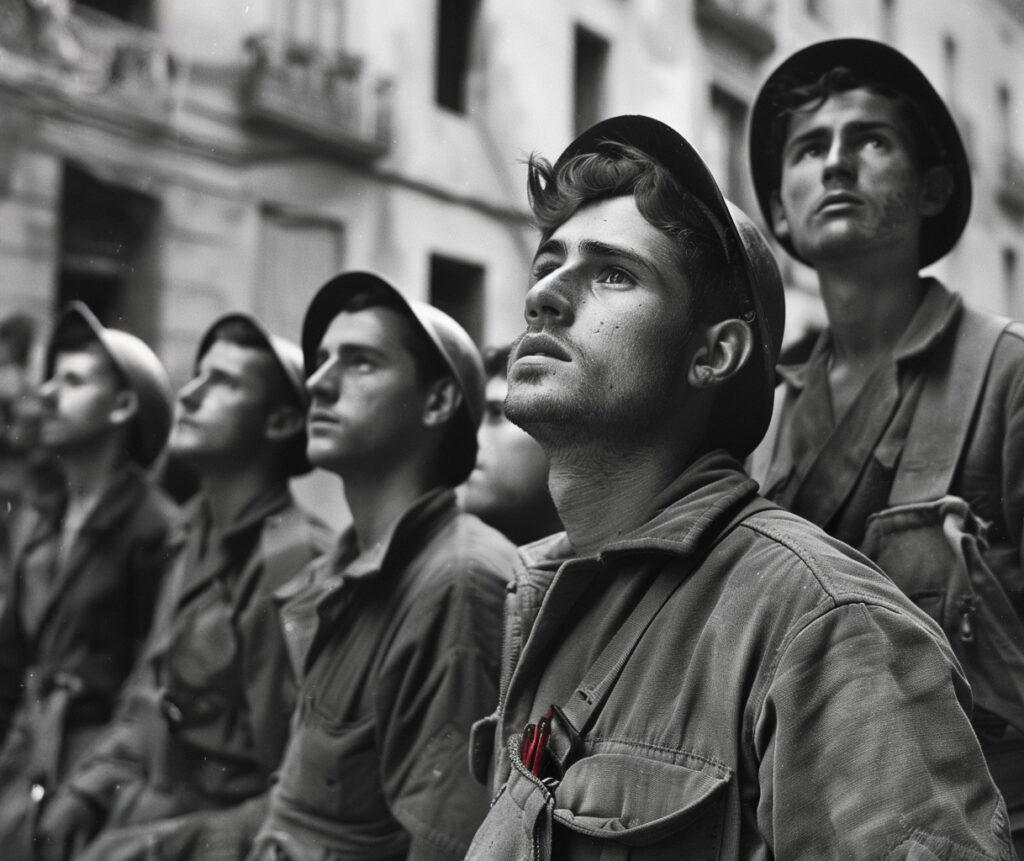The Spanish Civil War (1936-1939) was a brutal conflict between Nationalists and Republicans, shaping Spain’s future and influencing global politics leading up to World War II.
The Spanish Civil War, which raged from 1936 to 1939, was a bloody and complex conflict that pitted the leftist Republicans against the right-wing Nationalists. This war not only determined the future of Spain but also served as a prelude to World War II, drawing in international involvement and highlighting the ideological battles of the 20th century. It left a deep and lasting impact on Spanish society and politics, with repercussions felt around the world.
What were the reasons for the Spanish Civil War (1936-1939)?
The Spanish Civil War was the culmination of decades of social, political, and economic tensions within Spain. Key factors included:
- Political Polarization: Spain was deeply divided between the leftist Republicans, who advocated for progressive reforms and social justice, and the right-wing Nationalists, who supported traditionalism and conservatism. This polarization was exacerbated by the instability of the Spanish Second Republic, established in 1931.
- Economic Struggles: Spain’s agrarian economy faced significant challenges, with widespread poverty among peasants and laborers. The industrial sector also experienced labor unrest, further fueling social tensions.
- Regionalism: Spain’s diverse regions, such as Catalonia and the Basque Country, sought greater autonomy, creating friction with the central government.
- Military Discontent: The Spanish military harbored grievances against the Republic’s reforms, which aimed to reduce the army’s influence. Many military officers, disillusioned with the government, were inclined towards rebellion.
- International Influence: The rise of fascism in Italy and Germany, as well as the spread of communism, influenced Spain’s internal divisions. The ideological struggle between these forces played out on Spanish soil, drawing international attention and involvement.
These factors created a volatile environment, ultimately leading to a military coup in July 1936, which sparked the Spanish Civil War.

Who was involved in the Spanish Civil War (1936-1939)?
The Spanish Civil War saw a diverse array of participants, each with significant impacts on the conflict:
- Republicans: This coalition included left-wing parties, trade unions, anarchists, socialists, and communists. The Republicans sought to defend the Spanish Republic and implement progressive reforms. Key groups included the Spanish Socialist Workers’ Party (PSOE), the Communist Party (PCE), and anarchist organizations like the CNT-FAI.
- Nationalists: Led by General Francisco Franco, the Nationalists consisted of right-wing groups, monarchists, conservatives, and fascists. They aimed to overthrow the Republic and establish a military dictatorship. Key factions included the Spanish Phalanx (Falange Española) and the Carlists.
- International Brigades: Comprising volunteers from around the world, the International Brigades fought on the Republican side, driven by anti-fascist ideals.
- Foreign Nations: The war attracted significant foreign involvement. Nazi Germany and Fascist Italy provided substantial support to the Nationalists, including troops, aircraft, and equipment. The Soviet Union supplied aid to the Republicans, while Western democracies largely adhered to a policy of non-intervention, despite some individual efforts to aid the Republicans.
These diverse parties contributed to the complexity and intensity of the conflict, with international involvement escalating the war’s scale and impact.
The leaders of the Spanish Civil War (1936-1939)
Key leaders in the Spanish Civil War shaped the course of the conflict through their actions and decisions:
- Francisco Franco: The principal leader of the Nationalist forces, Franco emerged as the dominant figure following the
failed coup in July 1936. Franco’s strategic acumen, coupled with his ability to unify the various right-wing factions under his command, was instrumental in the Nationalists’ success. After the war, Franco established a military dictatorship that ruled Spain until his death in 1975.
- Manuel Azaña: Serving as the President of the Spanish Republic during much of the Civil War, Azaña was a key figure on the Republican side. His leadership was marked by efforts to maintain Republican unity and secure international support. Despite his efforts, internal divisions and external pressures weakened the Republican cause.
- José Sanjurjo: Initially a leading figure in the Nationalist uprising, Sanjurjo’s early death in a plane crash in July 1936 elevated Franco to supreme command. Sanjurjo had been a prominent military figure and his death removed a potential rival to Franco’s leadership.
- Dolores Ibárruri (“La Pasionaria”): A prominent communist leader and orator, Ibárruri became a symbol of Republican resistance. Her impassioned speeches, including the famous slogan “No pasarán!” (“They shall not pass!”), galvanized Republican forces and supporters worldwide.
- General Emilio Mola: Another key Nationalist leader, Mola played a crucial role in planning the coup against the Republic. He coordinated Nationalist military operations until his death in a plane crash in June 1937, after which Franco consolidated his leadership.
These leaders’ actions and decisions significantly influenced the course and outcome of the war, shaping Spain’s future political landscape.
Was there a decisive moment?
The Spanish Civil War transitioned from tension to open conflict following the military coup on July 17-18, 1936. The coup, initially intended to swiftly overthrow the Republican government, faced unexpected resistance, leading to a prolonged and bloody civil war. The failure of the coup to achieve a quick victory fractured Spain, dividing it into zones controlled by Republicans and Nationalists. This marked the definitive escalation from political strife to full-scale war.
What were the major battles?
The Spanish Civil War featured numerous significant battles, each shaping the trajectory of the conflict:
- Siege of Alcázar (July 21 – September 27, 1936): The siege saw Nationalist forces holding the Alcázar of Toledo against Republican attackers. The eventual relief of the siege by Franco’s forces provided a symbolic and morale-boosting victory for the Nationalists.
- Battle of Madrid (November 1936 – March 1939): Madrid was a focal point of the war, with intense fighting as Nationalist forces attempted to capture the Republican stronghold. Despite being under siege for much of the war, Madrid’s defenders, including the International Brigades, managed to hold out until near the end of the conflict.
- Battle of Jarama (February 6-27, 1937): This battle was a Republican attempt to cut off Nationalist forces advancing towards Madrid. The battle ended in a stalemate, with heavy casualties on both sides, demonstrating the war’s brutal nature.
- Battle of Guadalajara (March 8-23, 1937): An Italian-led Nationalist offensive aimed at encircling Madrid was repelled by Republican forces, marking a significant defeat for the Nationalists and boosting Republican morale.
- Battle of Brunete (July 6-25, 1937): A major Republican offensive aimed at relieving pressure on Madrid. Despite initial successes, the Republicans were ultimately forced to retreat, suffering heavy losses.
- Battle of Teruel (December 15, 1937 – February 22, 1938): This battle saw fierce winter fighting as Republicans captured the city of Teruel, only to lose it to a Nationalist counter-offensive. The battle was one of the bloodiest of the war.
- Battle of the Ebro (July 25 – November 16, 1938): The longest and largest battle of the war, the Ebro offensive was a last-ditch Republican attempt to turn the tide. Despite initial gains, the Republicans were eventually pushed back, suffering catastrophic losses that crippled their ability to continue effective resistance.
These battles highlighted the intense and often brutal nature of the conflict, with significant international involvement and the use of modern warfare tactics and technologies.
Was there a turning point?
The Battle of the Ebro, fought from July to November 1938, was a critical turning point in the Spanish Civil War. The Republicans launched a massive offensive to regain lost territory and reverse their fortunes. Initially successful, the Republicans soon faced a well-coordinated Nationalist counterattack. The prolonged and bloody battle exhausted Republican resources and manpower, leading to a decisive Nationalist victory. This defeat left the Republicans weakened and unable to mount any significant resistance, paving the way for Franco’s final offensives and the eventual fall of Madrid in March 1939.

The consequences of the Spanish Civil War (1936-1939)
The Spanish Civil War had profound consequences for Spain and the wider world:
- For Spain: The war resulted in the establishment of Francisco Franco’s dictatorship, which lasted until his death in 1975. The conflict caused immense human suffering, with hundreds of thousands killed and many more displaced. The repression and purges that followed the Nationalist victory further scarred Spanish society.
- Internationally: The war highlighted the ideological battle between fascism, communism, and democracy, serving as a precursor to World War II. It exposed the weaknesses of international organizations like the League of Nations and demonstrated the dangers of appeasement.
- Global Impact: The involvement of foreign volunteers and the use of Spain as a testing ground for new military strategies and technologies foreshadowed the global conflict to come. The war also inspired significant cultural and intellectual responses, influencing literature, art, and political thought.
–
The Spanish Civil War was a pivotal event in 20th-century history, shaping the future of Spain and serving as a grim warning of the conflicts to come. The war’s causes, battles, and consequences highlight the complexities of ideological struggles and the profound impact of international politics on national conflicts. The legacy of the Spanish Civil War continues to resonate, reminding us of the enduring importance of understanding and addressing the root causes of conflict.
Back to the Wars section